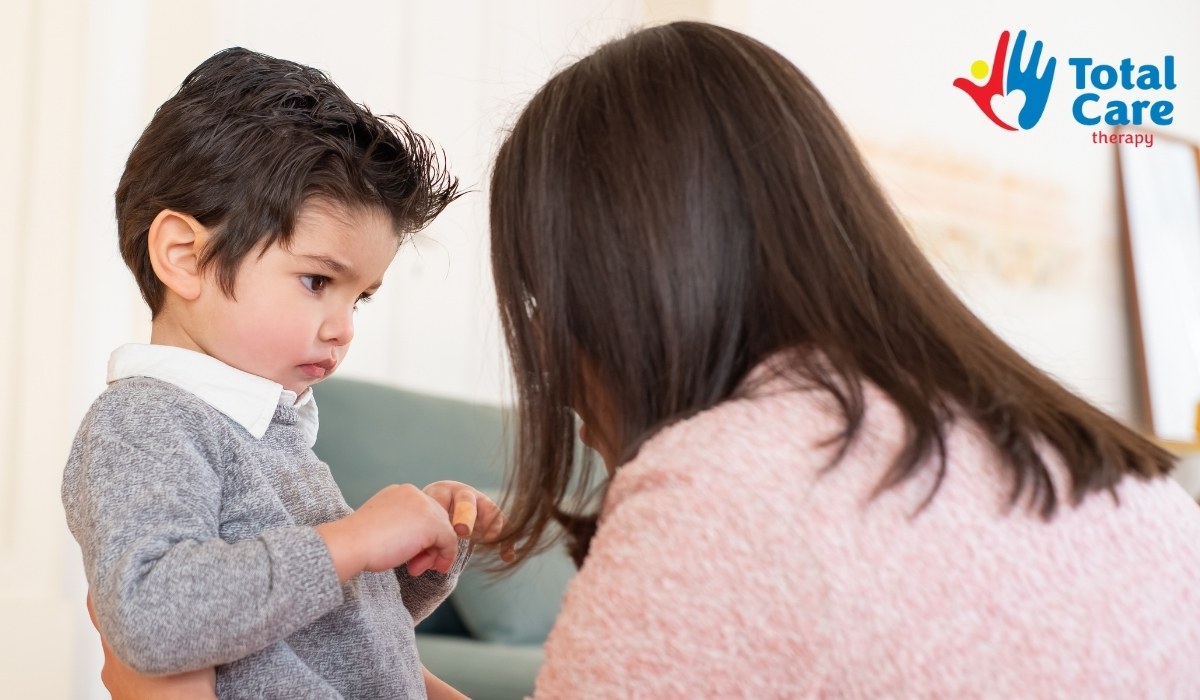Autism and Physical Touch: Why Some Kids Pull Away
Discover why children with autism may resist physical touch. Learn the sensory reasons behind it and find gentle ways to connect and show affection without overwhelm.
Autism and Physical Touch: Why Some Kids Pull Away
Key Points:
- Many children with autism find physical touch overwhelming due to sensory processing differences.
- Understanding their sensory profile helps parents approach touch in ways that feel safe and comforting.
- Gentle strategies, including sensory play and gradual exposure, can foster connection without distress.
Physical affection—like a hug, pat on the back, or cuddle—is a natural way parents express love. But for many children on the autism spectrum, physical touch can feel confusing or even distressing. When a child pulls away, it’s often not about rejection—it’s about how their brain processes sensory input.
This article explores why children with autism might resist touch, what’s happening neurologically and emotionally, and how parents can build trust and closeness without pushing past their child’s comfort zone.
Understanding Sensory Processing in Autism
Before assuming that a child dislikes affection, it’s important to understand sensory processing differences. Sensory processing refers to how the brain receives and responds to information from the environment—sights, sounds, textures, smells, and touch.
In many autistic children, the sensory system can be hypersensitive (overresponsive) or hyposensitive (underresponsive). A simple touch that feels gentle to most may feel sharp, hot, or ticklish to a child who’s hypersensitive to tactile input. Conversely, a child who’s hyposensitive might not even register a soft touch.
When touch feels unpredictable or intense, a child’s instinctive reaction may be to pull away—not because they don’t want connection, but because their nervous system feels overloaded. Recognizing this is key to approaching physical affection with empathy and patience.
Why Some Children with Autism Avoid Physical Touch
Autistic children may avoid physical touch for a range of reasons. It’s rarely about emotional distance—it’s more about how the body and brain experience physical sensations.
1. Tactile Sensitivity
Some children have heightened tactile defensiveness, meaning that even light touches can feel uncomfortable or startling. The texture of clothing, skin contact, or temperature differences can trigger a stress response.
2. Difficulty Predicting Sensory Input
Touch is unpredictable. A hug might vary in pressure each time, and the uncertainty itself can cause anxiety. Many children prefer deep, consistent pressure (like a weighted blanket) because it’s more predictable than light, fleeting contact.
3. Emotional Regulation Challenges
For some children, physical affection can stir emotions that are difficult to manage. A sudden hug might bring on overwhelming feelings they can’t express verbally, resulting in withdrawal or avoidance.
4. Social Understanding Differences
Autistic children may not instinctively grasp the social meaning of touch. While a hug might symbolize comfort for one person, another might interpret it as confusing or intrusive. ABA therapy often helps teach social boundaries and interpret nonverbal cues in a way that makes sense to the child.
The Science Behind the Sensation
When touch receptors on the skin send signals to the brain, the information travels through the sensory system. For neurotypical individuals, this process is usually smooth and regulated. But in children with autism, the brain may overprocess or underprocess those signals.
Research suggests that the somatosensory cortex—the area responsible for processing touch—can function differently in autism. This difference may lead to:
- Heightened reactivity: ordinary sensations feel amplified.
- Delayed processing: the body reacts slowly, creating confusion.
- Mismatch in emotional response: the brain may link touch with discomfort instead of comfort.
Understanding these neurological differences helps reframe how we interpret a child’s reactions. What may appear as rejection is often self-protection.
5 Gentle Ways to Connect Without Overwhelm
Physical touch doesn’t have to disappear—it can simply be reimagined. Building connection starts with meeting your child where they are and introducing comfort at their pace.
Here are effective, parent-tested strategies to foster closeness:
1. Start with Observation
Notice your child’s responses in different contexts. Do they enjoy certain textures, like soft blankets or firm squeezes? Understanding these preferences guides how you introduce new forms of touch.
2. Offer Choices
Give your child agency. Ask, “Would you like a hug or a high five?” This helps them feel in control and respected, reducing anxiety around touch.
3. Use Deep Pressure Activities
Children who find light touch aversive often respond better to deep pressure. Activities like rolling a therapy ball over their back, using weighted blankets, or bear hugs (when welcomed) can calm the sensory system.
4. Pair Touch with Predictability
Routine helps build trust. If a bedtime hug happens every night after brushing teeth, it becomes expected—and less overwhelming. Predictable patterns make touch safer and easier to accept.
5. Incorporate Sensory Play
Sensory play—like kneading playdough, squeezing stress balls, or wrapping in soft fabrics—helps children get used to tactile experiences in a fun, low-pressure way. Over time, this can reduce tactile defensiveness.

When Touch Triggers Meltdowns
Sometimes, even gentle contact can trigger a strong emotional reaction. This isn’t misbehavior—it’s a sign that the sensory system has gone into overdrive.
When meltdowns occur:
- Stay Calm and Reassuring – Speak softly and move slowly. Avoid additional physical contact unless your child initiates it.
- Offer a Safe Space – Let them retreat to a quiet area with familiar sensory comforts like headphones, weighted blankets, or dim lighting.
- Reflect Afterwards – Once calm, discuss what happened using simple language: “It felt too tight when I hugged you. Next time, what would feel better?”
This approach helps children identify triggers and advocate for their own sensory needs.
How ABA Therapy Can Help
Applied Behavior Analysis (ABA) therapy offers evidence-based strategies to help children with autism build tolerance for touch and understand social cues around physical affection. At Total Care ABA, therapists create individualized programs that target sensory desensitization and emotional regulation in safe, structured ways.
Through ABA therapy, children can learn to:
- Recognize and communicate their comfort levels.
- Practice gradual exposure to non-threatening touch.
- Understand the social meaning behind gestures like hugs or handshakes.
Parents also receive guidance on reinforcing positive experiences at home—turning daily routines into opportunities for connection.

Helping Parents Build Confidence and Connection
Parenting a child who avoids touch can feel isolating, but it doesn’t have to be. With understanding and the right tools, families can rediscover ways to bond—through play, laughter, and shared experiences that feel emotionally safe.
Every child deserves affection on their own terms. Respecting sensory boundaries while gently expanding them is key to emotional growth. With the right support, children can learn to embrace affection—not with fear, but with trust.
Finding the Right Support with Total Care ABA
If you’re struggling to understand your child’s sensory sensitivities or looking for effective strategies to build connection, Total Care ABA can help. Our experienced team provides compassionate, evidence-based ABA therapy in Maine, New Mexico, Tennessee, Indiana, Georgia, Arizona, North Carolina, and Utah, helping children develop emotional resilience, communication skills, and sensory comfort at their own pace.
We work closely with families to create environments where children feel understood, safe, and ready to connect. Reach out today to learn how personalized ABA programs can help your child thrive.








